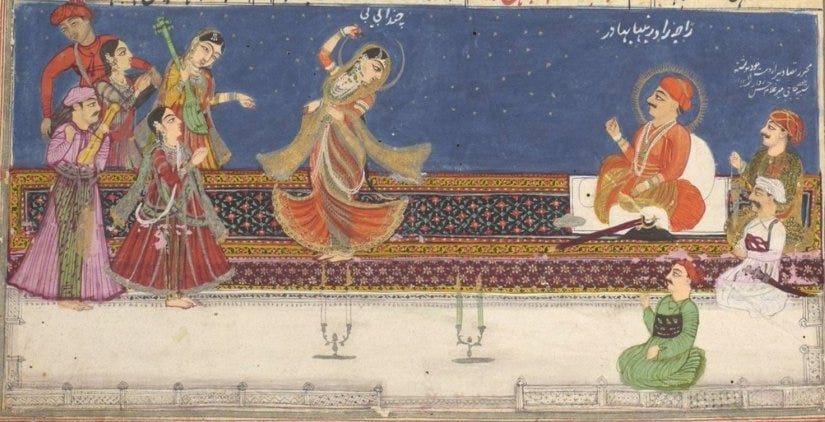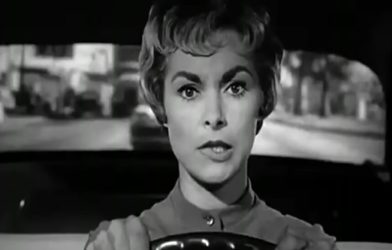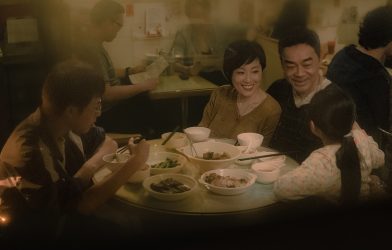
The captivating aesthetics of films like “Heeramandi” evoke a sense of awe among viewers. However, the apparent disregard for addressing social issues, such as prostitution, within Bollywood cinema suggests an indifferent and callous approach towards societal concerns, despite the emphasis on visually pleasing elements. Indian cinema serves as a platform for the cultivation and propagation of an idealised notion of womanhood that closely aligns with entrenched patriarchal norms within society.
Ancient texts depict three archetypes of women: those committed to monogamous fidelity despite their husband’s polygamous practices; those who lead celibate lives removed from men; and affluent single women proficient in the arts who held esteemed positions in antiquity but are depicted as prostitutes in modern literary works. One commonly known term for these individuals is “Tawaif,” derived from the Urdu word “Taifi,” signifying a “travelling troupe.” Certain etymologists posit that “Tawaif” originates from the Arabic term “Tauf” or “tawaf,” connoting circling or roaming. This term is also referenced in the Quran concerning heavenly rewards for believers, wherein youthful servants are designated to “circle around” or “attend to” them. The historical trajectory of courtesans in India reflects a complex narrative. Once esteemed as advisors to Mughal courts, they are now objectified and glorified solely for their sexual allure. The decline in the status of the Tawaifs, who were once revered for their cultural refinement, to the role of prostitutes was influenced partly by their perceived threat to British expansion and partly by the patriarchal structure of Oudh society. The political contributions of many women in the domestic sphere were disregarded and undocumented. At the same time, those who actively engaged and risked their honour, such as courtesans, were stigmatised or labelled as prostitutes. Male writers, journalists, and historians largely ignored the sacrifices and struggles of women, resulting in a lack of literature on their experiences. In her book “Tawaifnama,” Saba Diwan extensively discusses the involvement of courtesans in nationalist movements during colonial rule, shedding light on how deep-seated stigmatisation has obscured and erased their record of participation in the nationalist cause.
Within Bollywood narratives, courtesans are portrayed as inherently tragic figures, following a consistent template throughout cinematic history. Each portrayal of a “begum” or “bai” in Bollywood films reflects a character entangled in circumstances beyond their control, characterised by deep sorrow and a longing for love and societal acceptance. Their narratives typically culminate in tragedy, as exemplified by iconic performances such as those by Meena Kumari in “Pakeezah,” Rekha in “Umrao Jaan,” and Vyjayanthimala and Madhuri Dixit in “Devdas.” Filmmakers and audiences across South Asia have long been captivated by the archetype of a beautiful and cultured woman possessing refined dance skills, a melodious voice, and a compassionate heart. Despite variations in presentation, the overarching storyline remains consistent.
Although the term “tawaif” has become synonymous with “prostitute” or sex worker in contemporary usage, historically, Tawaifs were highly skilled performers of the arts during the era when culture, music, poetry, and dance thrived in India. Courtesans were integral to this rich cultural milieu. With the enactment of British Crown Law, Tawaifs were criminalised along with common-sex workers, leading to their gradual marginalisation and societal ostracism as perceptions shifted to view them as morally decadent. In Bollywood, courtesans have been a consistent source of success over the decades, attracting audiences to theatres. Bollywood has often exploited the poignant narratives of courtesans, seamlessly incorporating them into films to feature item songs and bold scenes. This trend persisted until the 1990s in numerous B-grade Bollywood productions until the traditional courtesan Mujras were supplanted by contemporary item songs and dances in globalised India. However, the allure of courtesan characters endured, with top actresses in each decade aspiring to portray such roles, often seen as a benchmark of excellence in acting. These films, featuring stunning actresses and elaborate dances, time and again romanticise the lives of courtesans, portraying them as leading luxurious lifestyles. Characters like those in Bhansali’s “Devdas,” “Gangubai,” and now “Heeramandi” exude a dreamy aura with elaborate costumes and luxurious brothels, presenting a Bollywood portrayal far removed from the realities of courtesan life.
The film industry’s depiction of courtesans and prostitutes has played a significant role in normalising and romanticising prostitution within society. This normalisation has resulted in the exploitation of women, especially those from marginalised communities, who are often compelled to enter the profession because of poverty and limited opportunities. Moreover, the depiction of women as objects of desire in Bollywood films has perpetuated harmful stereotypes and contributed to the objectification and sexualisation of women. These individuals, who were frequently coerced into the profession due to socioeconomic factors and societal oppression, endured physical and sexual abuse and their lives were controlled by influential men who viewed them as mere sources of pleasure.
In conclusion, the portrayal of Tawaifs and courtesans in Bollywood films has perpetuated harmful stereotypes, playing a significant role in normalising and romanticising prostitution. The exploitation of poignant narratives of courtesans in movies has resulted in the objectification and sexualisation of women, contributing to the marginalisation and societal ostracism of these individuals. This depiction has further obscured and erased the historical and political contributions of courtesans, who were once esteemed as advisors to Mughal courts and played a role in nationalist movements during colonial rule. As the film industry continues to romanticise the lives of courtesans, it is essential to recognise the real experiences and struggles of these individuals and work towards shifting the narrative to one that acknowledges their historical significance and societal contributions.
Efforts should be made to challenge and redefine the portrayal of courtesans in Bollywood to reflect a more accurate and respectful representation of their experiences. Furthermore, addressing the root causes of poverty and limited opportunities that force marginalised individuals, particularly women, into the profession of prostitution is crucial to creating a more equitable and just society.
Zainab Fatima is a student at Jamia Millia Islamia University, New Delhi









